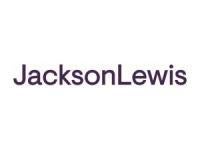Earlier this year, North Dakota’s Governor signed HB 1127, which introduces new compliance obligations for financial corporations operating in North Dakota. This new law will take effect on August 1, 2025.
The law applies to certain “financial corporations.” Under the law, financial corporation means all entities regulated by the Department of Financial Institutions, excluding credit unions, as well as banks and similar institutions organized under North Dakota or U.S. law. Entities covered by the law include collection agencies, money brokers, money transmitters, mortgage loan originators, and trust companies.
Covered financial corporations must implement a WISP. HB 1127 requires the implementation of comprehensive, written information security programs tailored to each organization’s size, complexity, and the sensitivity of customer information they handle. The law mandates specific program elements, including risk assessments, designated security personnel, implementation of technical safeguards, regular testing, incident response planning, and prompt notification of security events to authorities, discussed further below.
The law defines “information security program” as “the administrative, technical, or physical safeguards a financial corporation uses to access, collect, distribute, process, protect, store, use, transmit, dispose of, or otherwise handle customer information.”
HB 1127 also outlines several elements required for the programs, which include, among other things:
- Designated Security Leadership: The information security program must denote a qualified individual responsible for implementing, overseeing, and enforcing the program.
- Risk Assessment: foundational to the information security program is the written risk assessment, which identifies reasonably foreseeable internal and external risks to the security, confidentiality, and integrity of customer information.
- Safeguards: The corporation must design and implement safeguards to control and mitigate the risks identified through the risk assessment. This should include a periodic review of the corporation’s data retention policy.
- Testing and Monitoring: the above safeguards’ key controls, systems, and procedures must be regularly tested or otherwise monitored.
- Incident Response Planning: The corporation must establish a written incident response plan designed to promptly respond to and recover from any security event materially affecting the confidentiality, integrity, or availability of customer information the corporation controls.
- Notification Requirements: the corporation must notify the state’s Commissioner of Financial Institutions of a “notification event” – defined as “the acquisition of unencrypted customer information without the authorization of the individual to which the information pertains.” For notification events implicating five hundred or more consumers, the corporation must notify the Commissioner as soon as possible, but no later than forty-five days after the discovery of the event.
- Oversee Service Providers: The corporation must take reasonable steps to select and retain service providers capable of maintaining the safeguards of customer information. Moreover, the corporation must periodically assess the service providers based on the risk they present.
- Annual Report to Board: Must designate a qualified individual to report in writing at least annually to the corporation’s board of directors or similar on the overall status of the information security program and material matters related to the program, including risk assessment.





 />i
/>i

